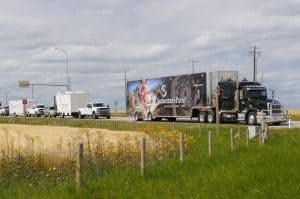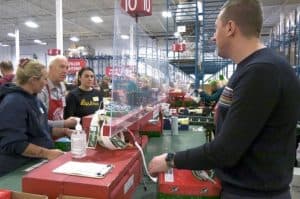Alberta volunteers learn about Samaritan's Purse Disaster Relief, which helps clean up in communities that have been affected by disasters such as floods or fires.
Written by Kevin Vink
Published by The Olds Albertan on Tuesday, November 20, 2012
While Samaritan’s Purse is best known for sending shoe boxes packed with goodies around the world and giving them to less-fortunate children for Christmas, a local volunteer says the organization is doing work right here in Canada as well.
Colin Creighton, Assistant Pastor at Zion Evangelical Missionary Church, said he and about 20 other volunteers from the area just completed a basic training course held at the church.
The course gave volunteers a rundown as to what exactly Samaritan’s Purse does right here at home, and how they can help.
“The vision is, locally, to see our community involved in helping others,” said Creighton. “Whether they’re in Maple Creek or they’re in Sicamous, and further north too. It’s just trying to mobilize people that have a heart.”
He said the organization is trying to find as many potential volunteers as possible, because some may simply not be able to make it when disaster strikes. But if there’s a big enough list of people, he noted, hopefully enough make it out to a call that they can make a difference.
Volunteers don’t have to be associated with a church, or even a religion to get involved, he said.
All being on an on-call list requires is being willing to jump in and do some grunt work, he added.
“So many people have a heart to help others, that want to do something. They see it on the news and wonder ‘What can we do?’ Well, actually, there is something we can do,” he added.
“Whenever there’s a domestic disaster, groups like the Red Cross go in initially,” he said. “If there’s evacuations or anything like that, it’s always the Red Cross first on site, they’re the first responder.”
After a couple of weeks, he said, when the initial disaster has subsided and the recovery process starts in earnest, Samaritan’s Purse will come in, once invited, and help residents in any way they can.
“They don’t just kind of drive in and say ‘Here we are.’ They will offer their services, but they will wait for an invitation from the community,” he noted.
Usually, the process starts with the organization connecting with a local church and using the site for their disaster relief trailer, which acts as a command centre for the relief efforts, said Creighton.
“So in a place like Slave Lake when they had the fires, initially the Red Cross went in. And when it was safe for others to come in, then Samaritan’s Purse would make their disaster relief unit available.”
They will then set to work clearing out basements or yards of debris, as well as rehabilitate houses, he said.
He used the flooding in Eastern Canada as an example.
“With flooding, what will happen is all that silt and mud will go into a house and it gets flooded out. Once it fills up, three or four feet (of the basement) can be filled with filth, mud and all kinds of debris.
“Once the water recedes, now you’ve got a disaster, because you’ve got mould growing and you’ve got all these issues.”
He noted that contamination can also be a problem, because sewage systems often spill over and mix with the floodwaters.
The first step, he said, is that when help is requested, an assessor will go into the houses, see what needs to be done, and will determine what is insured and what is not.
“If there’s insurance, they don’t do what’s insured. That’s paid for. What they do is they try to help people with no insurance or who are under-insured.”
The high priority, he noted, is if there’s a tree leaning on the house, or if shingles are completely gone, but they will also cut out contaminated, potentially mouldy drywall and insulation in basements that have been flooded and damaged.
“Usually, they will cut the drywall—it could be four feet up, or all the way up to the roof—clear out the insulation and all the other stuff, and spray it down to keep the mould from growing and then they leave it at that stage.”
Then, he said, that’s where other groups like the Mennonite Disaster Services or World Renew, a Christian Reformed Church operation, come in, helping to rebuild what has been destroyed or lost.
The Samaritan’s Purse operation is usually in a single area from the two-to six-week mark after the initial disaster, he stated.
The ideal goal is to have volunteers that have a medical background, people that have construction experience, and even people who may be semi-retired, he said.
“They even have people that will cook for the teams. There’s kind of a role for pretty much everybody.
“Some people from our area may decide that they would want to be chaplains. They can’t swing an axe or use a chainsaw, but they can get involved with supporting people.”
Creighton said those who may be interested in joining the volunteer list can call the Zion Evangelical Missionary Church at 403-335-3629, or can visit (www.samaritanspurse.ca/disaster-relief).






